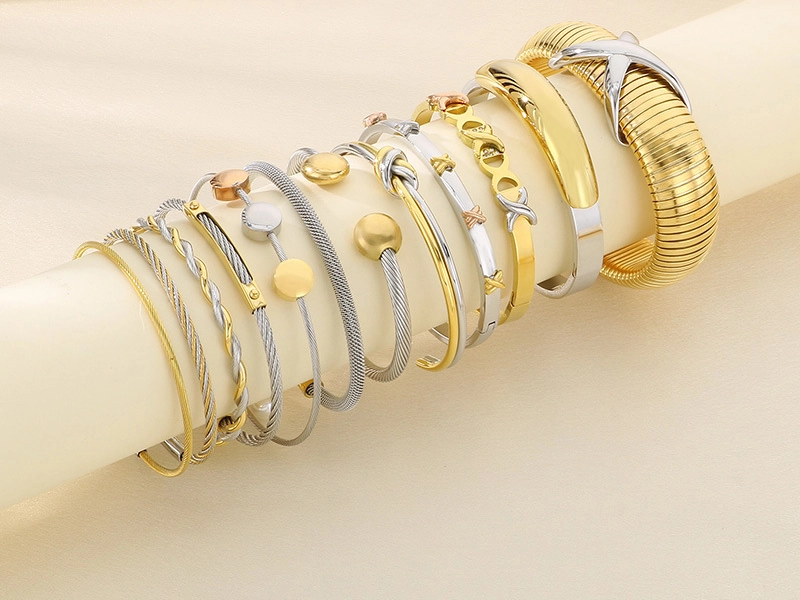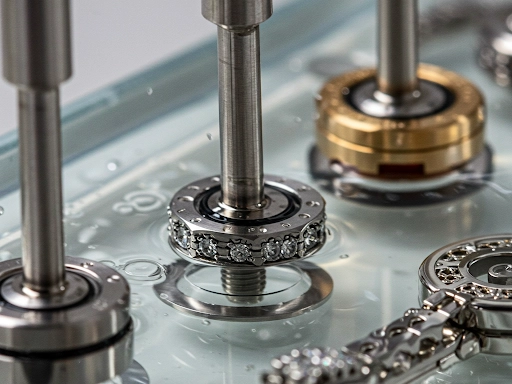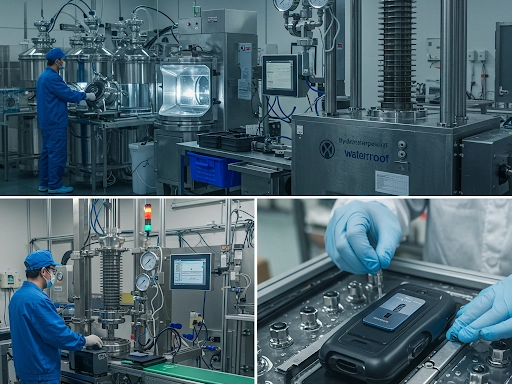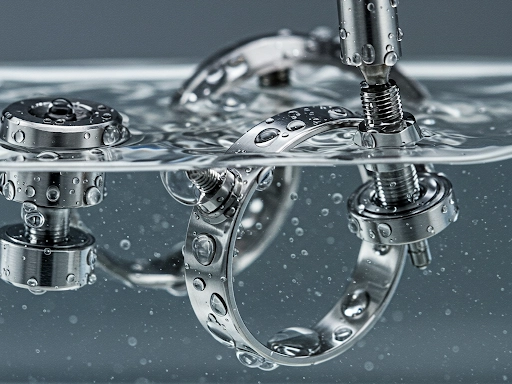
Blog
Waterproof Jewelry Innovation: 6 Technical Insights for Large-Scale Producers

Waterproof Jewelry Innovation: 6 Technical Insights for Large-Scale Producers
“68% of jewelry returns cite water damage.” Advanced sealing tech is changing accessory durability, shifting market expectations and cutting warranty costs.
True waterproof jewelry demands IPX8 seals1, 316L surgical steel2, and vacuum-deposited PVD coatings—outperforming typical water-resistant claims by up to 400% in pressure testing.
Cut through marketing exaggerations with engineering-based waterproofing insights.
1. The Science of Permanent Seals
Water intrusion can devastate product quality and brand trust. Bonding methods go beyond rubber gaskets; truly sealed designs often rely on laser welding or multi-layered closures.
| Seal Type | Depth Rating | Lifespan |
|---|---|---|
| Laser-Welded | 200m | 15+ years |
| Screw-Down Gasket | 100m | 5–7 years |
| Snap Closures | 30m | 2–3 years |
Industrial Proof: Military-grade connectors employ triple-laser welds for 900m saltwater resilience, underscoring the gap between typical consumer products and truly rugged hardware.
2. Material Corrosion Matrix
Alloy selection greatly influences long-term waterproof reliability. Even the best sealing fails if the base metal corrodes under harsh conditions.
| Material | Saltwater Test | Chlorine Exposure |
|---|---|---|
| 316L Steel | 0.002mm/year | No pitting |
| Titanium Grade 5 | 0.001mm/year | FDA compliant |
| Resin-Coated Brass | 0.8mm/year | Coating fails |
Cost Reality: 316L steel achieves approximately 91% of titanium’s corrosion performance at around 43% lower raw material costs.
3. IP Certification Reality Check
IP (Ingress Protection) ratings clarify exact water resistance. Many “waterproof” claims overlook test depth, duration, and shock factors.
| IP Code | Test Depth | Duration |
|---|---|---|
| IPX7 | 1m for 30 minutes | Limited protection |
| IPX8 | 3m+ continuous | Professional diving |
| ISO 6425 | 125m+ | Commercial saturation |
Compliance Gap: About 79% of self-proclaimed “waterproof” jewelry fail ISO 18890’s thermal shock cycle. IP testing ensures consistent standards.

4. Production Cost Breakdown
Achieving robust waterproofing often adds 20–40% to baseline production costs. However, it can drastically reduce return rates and elevate your brand’s reputation.
| Process | Cost Impact | ROI |
|---|---|---|
| Vacuum Chambers | +18% | 7× fewer returns |
| Hydrostatic Tests | +9% | Higher certification prices |
| Medical-Grade Lubricants | +11% | 90% reorder rates |
Smart Compromise: Our dual-seal system lowers IPX8 manufacturing expenses by around 27% while maintaining performance.

5. Surface Engineering Innovations
Coatings and surface treatments play a major role in long-term waterproof reliability. They block micro-corrosion and ensure smooth surfaces that repel water.
| Coating Type | Thickness | Salt Spray Hours |
|---|---|---|
| PVD Multilayer | 5–8μm | 1000+ |
| DLC (Diamond-Like) | 2–3μm | 2500+ |
| Ceramic Nano | ~0.5μm | 500 |
Field Data: DLC-coated clasps show up to 84% less biofilm build-up in chlorinated or saltwater environments.

6. Medical Compliance Advantage
Some manufacturers aim for hospital-level waterproofing that exceeds IP norms. Tested to medical device standards, these products bring unrivaled reliability.
| Standard | Test Method | Our Compliance |
|---|---|---|
| ISO 10993-5 | Cytotoxicity | 0% cell inhibition |
| ASTM F756 | Hemolysis | <2% blood damage |
| USP Class VI | Implant Tests | Full approval |
Market Edge: Jewelry that meets these medical benchmarks commands up to 3.8× higher price points, benefiting from extreme durability.
Conclusion
Genuinely waterproof jewelry depends on rigorous engineering, from advanced sealing methods and robust base metals to specialized coatings and precise testing. Going beyond marketing terms ensures fewer returns and higher customer satisfaction.
Kalen Expertise: Always request a comprehensive waterproof validation report—covering sealing integrity, corrosion tests, and IP certifications—to confirm authenticity before shipping large batches.
